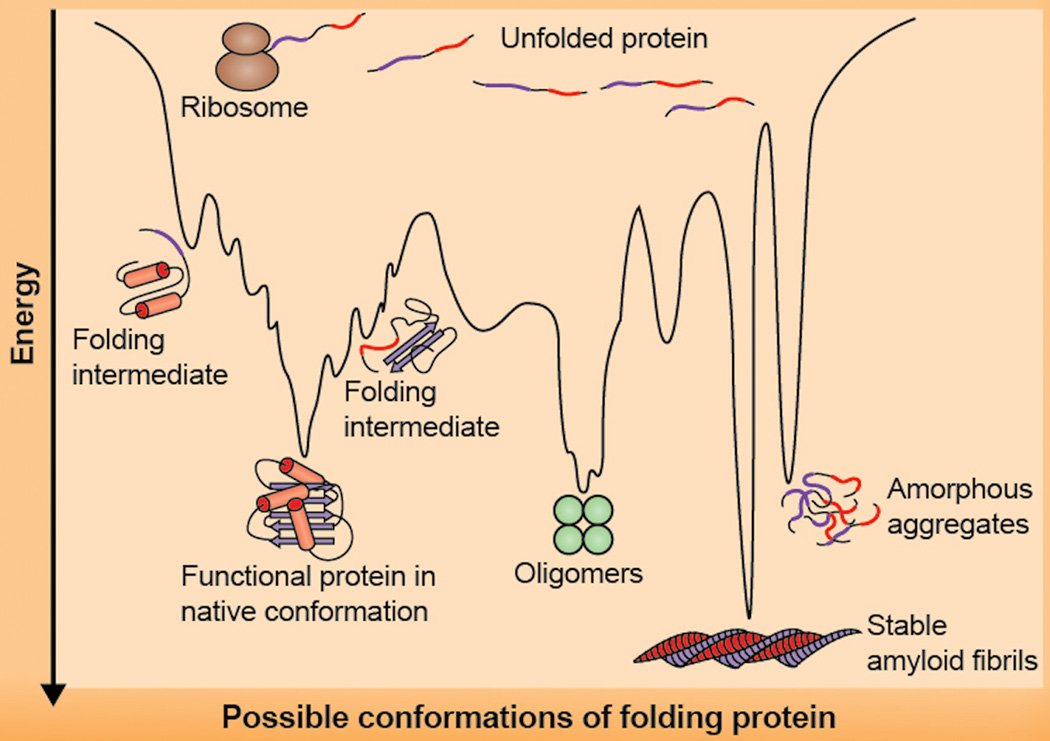Figure 2.
Misfolding of proteins can lead to degenerative changes associated with aging. This diagram illustrates energy changes associated with protein folding, and shows how misfolding can favor protein aggregation involved in some diseases of aging. “Protein folding allows an amino acid chain to become a functional molecule. Multiple factors in this dynamic process can result in misfolding. A mutation can stabilize an intermediate in the folding process, causing this misfolded state to be favored over the properly folded protein. Furthermore, for many proteins, the functionally folded form is not the lowest energy state of the protein. Many proteins can form stable amyloid fibers or amorphous aggregates that can accumulate and disrupt cellular processes. Given the importance of proper folding to protein function, it is not surprising that each of these misfolding events can be associated with disease.” The figure and text are reprinted from part of a figure in the open-access review of Valastyan and Lindquist (2014).

